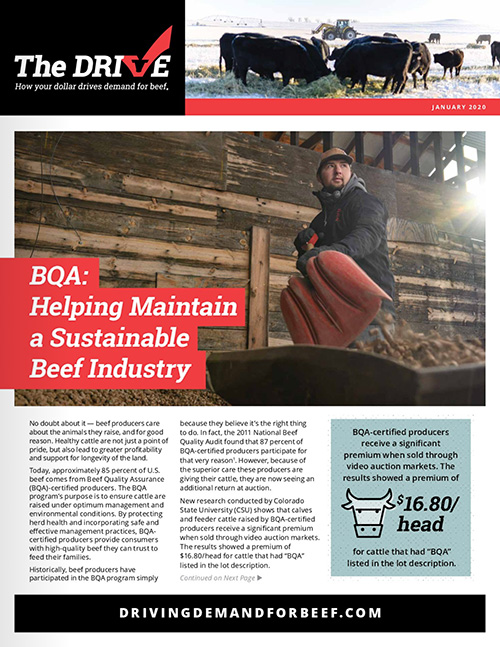How Does Beef Stack Up To Plant-Based Alternative Proteins?
Like many of you, I have a favorite morning news program I watch nearly every day. And over the past few years, I’ve watched with interest (and some alarm) as news anchors and businesspeople seemed to overwhelmingly embrace plant-based alternative proteins. Some even referred to these products and others as “revolutionary” and “game-changing” in the protein marketplace.
However, I heard some beef industry stakeholders refer to the market for these protein alternatives as small and inconsequential. I found myself harkening back to the 1970s when we didn’t pay enough attention to consumer concerns about beef’s healthfulness.

Now, in 2021, we’re still fighting misconceptions and myths about beef’s nutritional profile. I became personally concerned that we were heading down the same path when it came to alternative proteins. Fortunately, I discovered my colleagues on the Cattlemen’s Beef Board (CBB) felt the same way. As a result, the Beef Checkoff commissioned a research study to understand plant-based alternative proteins and their potential impact on beef demand.
This study, invested producer dollars to fund research that uncovers the latest consumer preferences and attitudes toward beef and other proteins. The Beef Checkoff then uses this information to determine the messaging, strategies and tactics to encourage consumers to choose beef.
All in all, the research shows us that plant-based protein alternatives are a relatively small threat to the beef industry right now. As Beef Checkoff contractors develop new plans and initiatives to promote beef, we’re asking them to consider this study’s findings along with other factors that could impact beef demand, both now and well into the future. I can assure you the CBB members will do their very best to invest your Checkoff dollars wisely to grow beef demand.
 Research Results
Research Results
Plant-based alternative proteins may be getting a lot of hype, but the reality is that consumers still love and choose beef. Consumers are selecting beef about three times more often than plant-based protein alternatives.
To fully understand alternative proteins’ influence in the marketplace as well as consumers’ buying habits and perceptions of beef, the Beef Checkoff commissioned a research study about plant-based alternative proteins and their potential impact on beef demand. The study, “Impacts of New Plant-Based Protein Alternatives on U.S. Beef Demand,” authored by Glynn T. Tonsor, Jayson L. Lusk and Ted C. Schroeder, reflects the attitudes and opinions of more than 3,000 U.S. residents surveyed in September 2020. The study’s results, weighted to better represent the U.S. population, provide a comprehensive assessment across retail and foodservice market channels.
 Main Findings
Main Findings
- Real beef is currently chosen in the marketplace about three times more often than plant-based protein alternatives.
- Beef has a good image. As a result, consumers’ perceptions of beef’s taste, appearance, price and naturalness greatly exceed that of plant-based proteins.
- Regular meat consumers (68% of the study’s full sample) are much less likely to select a plant-based item when a beef item is available.
- Changes in the price of beef have a much larger impact on consumer decisions to buy beef than the impact of changes in the prices of plant-based offerings. This means plant-based burgers are relatively weak substitutes for beef.
To view the study’s full research findings, visit the full report.
The Beef Checkoff program was established as part of the 1985 Farm Bill. The checkoff assesses $1 per head on the sale of live domestic and imported cattle, in addition to a comparable assessment on imported beef and beef products. States may retain up to 50 cents on the dollar and forward the other 50 cents per head to the Cattlemen’s Beef Promotion and Research Board, which administers the national checkoff program, subject to USDA approval.








































































